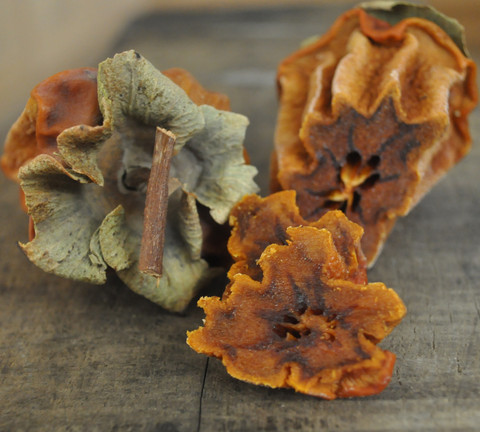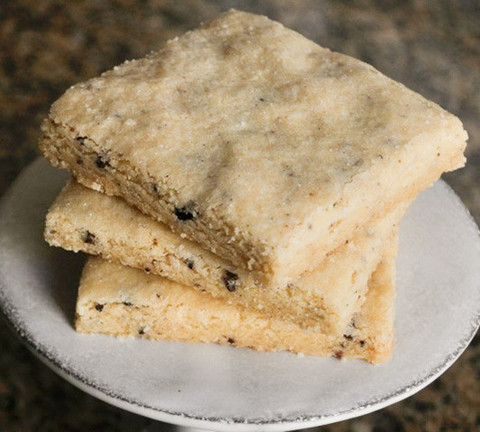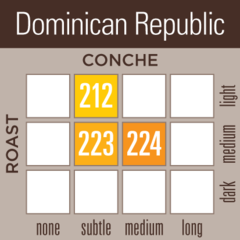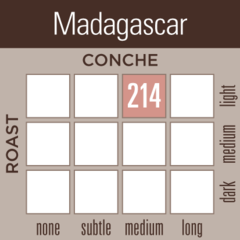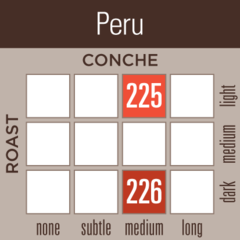I'm on a journey to explore the world of American craft chocolate
Bar Au Chocolat: Remember to Always Be Daring
Nicole Trutanich makes great chocolate, and she also happens to be a woman. That’s unusual in a genre dominated by engineers, scientists, and tech stars — in other words, men. But why should a story about a chocolate maker who is female become a story about a Female Chocolate Maker?
After all, her chocolate can stand on its own, without any backstory. Bar Au Chocolat, her Los Angeles–based brand, won five awards at the 2015 Academy of Chocolate, including a gold metal. She’s been featured at events at the Chocolate Garage, a stamp of approval in this industry, and Salt and Straw has used her chocolate in their ice cream.
Yet when I talked to Nicole recently, she told me that the number one question she gets is, Why aren’t there more female chocolate makers? It’s true that they’re a rare breed. I can list the number of stand-alone female chocolate makers on one hand: Bar Au Chocolat, Castronovo Chocolate, ChocoVivo, Cacao Atlanta. One reason: machines. “As women we aren’t socialized to question how things work in the way that men are,” Caitlin Lacey, Dandelion’s production manager, told me recently. She said that working with machines to make chocolate “was a big hurdle” for her, something she’d always been scared of. She learned how to approach them, and triumphed.
Nicole has a similar story. Of course, the fortysomething ex-marketing exec doesn’t exactly fit the profile of the young, bearded hipster chocolate maker.
There are other reasons that Nicole stands out besides her gender, though. The first? She’s taking her time. Ten years ago there were maybe 5 bean-to-bar chocolate makers in the country; now there are around 200. Many of them are rushing to market with subpar bars in order to capitalize on the trend.
Nicole, on the other hand, moves almost painstakingly slowly. When she started making chocolate in 2010, she peeled each roasted bean by hand. She sources gorgeous paper to package her bars and uses intricate Japanese folding methods to wrap them (which, for rubes like me, are almost impossible to replicate; I often end up crudely crumpling the paper around the remaining chocolate.)
She’s “cherry-picked” a few specialty stores to carry her brand and doesn’t want to promote herself until she’s absolutely ready. “There’s plenty of time to market and do PR,” she said. “I focus on trying to make good chocolate.”
For many bean-to-bar makers, chocolate is the beginning and end of the story. But Nicole wants to be different. She wants to stay “niche” with her chocolate and “make money through diverse products” like her culinary traditions series, foods that live up to the Bar Au Chocolat level but aren’t necessarily, well, bars. Think local dried persimmons, cacao nib granola, shortbread with roasted cacao nibs, and — in the future — handmade marzipan hearts as well as a smattering of irresistible chocolates like rustic chocolate squares, and housemade chocolate-hazelnut spread.
You’ll be able to find them all, as well as “cocoa-inspired sweets and savories” like hot chocolate, pastries, coffee, ice cream, and more, at her forthcoming café and storefront in Manhattan Beach, called Bar Au Chocolat Atelier & Chocolate Bar. Think 2,300 square feet of chocolatey goodness that you can tour as well as relax in, hopefully open by Valentine’s Day 2017.
At the end of the day, though, it often comes back to gender roles for Nicole. “I just wish I weren’t called a ‘woman chef,’ a ‘woman chocolate maker,’” Nicole told me. “I wish I was just one of them.”
I’m not an essentialist like Carolyn Heilbrun (who argued that women’s writing is inherently different from men’s), but just take a look at how Nicole wants people to interact with her chocolate:
“Chocolate is a very sensual experience. I wanted my packaging to reflect this. I thought about the texture of the paper, the fold, the anticipation of unwrapping a bar, the aroma as you take it out of the copper foil, the simplicity of the bar design, and finally the tasting of the chocolate. I wanted to create an artistic, authentic, distinctive, delicious and inspired tasting experience.
“Paper is the first touch point of my chocolate. I wanted the act of unwrapping my bar to be sensual and intimate. I wanted the experience of my chocolate to be beautiful from the first touch. I chose surfaces with a gentle, velvety, luxurious texture.”
“In the end, I want people to feel the pulse and passion behind my chocolate.”
The pulse and passion before a drop of chocolate hits. Photo courtesy Flickr user Doniree Walker
Contrast this with Colin Gasko of Rogue Chocolate’s fantasy of people interacting with his chocolate:
“I want to spend about a year making the perfect chocolate slab, then install it in a white room, where no one would ever be able to eat it.”
Or Fresco’s sexless squares that describe the roast and conche of his chocolate:
As I mentioned above, I don't think this is an essential difference between women and men. Rather, women have been taught to frame things in terms of love and emotion (and passion) and men have been taught to focus on cold, hard "facts." Does one type of person make better chocolate than another? I’ll let you answer that question for yourself. But I’d like to leave you with one observation, which, since this is the 12th and last profile on Chocolate Noise (don't worry, there will be plenty more blog posts!), seems particularly apt: The Latin aphorism on Bar Au Chocolat’s labels means, “remember to always be daring.”




